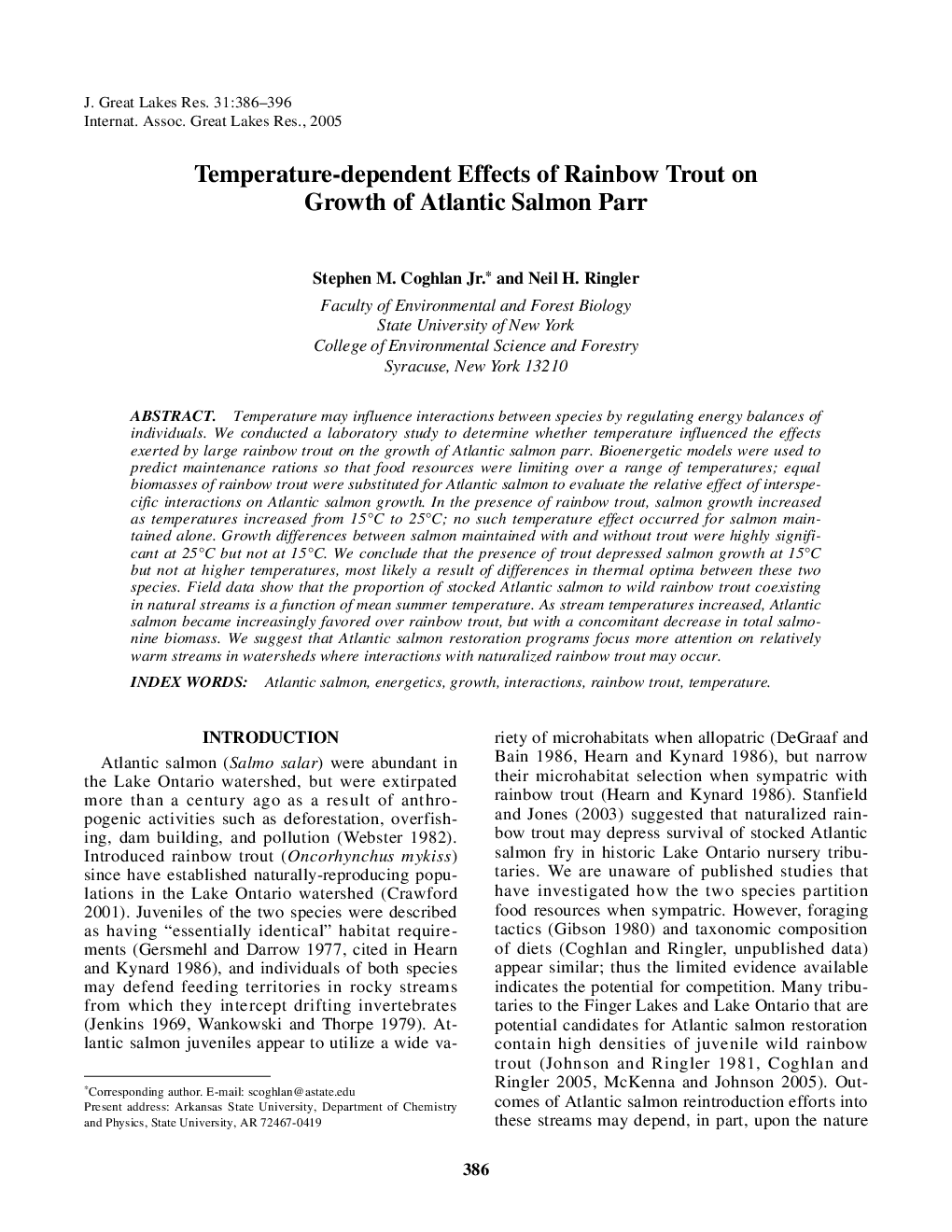| Article ID | Journal | Published Year | Pages | File Type |
|---|---|---|---|---|
| 9450135 | Journal of Great Lakes Research | 2005 | 11 Pages |
Abstract
Temperature may influence interactions between species by regulating energy balances of individuals. We conducted a laboratory study to determine whether temperature influenced the effects exerted by large rainbow trout on the growth of Atlantic salmon parr. Bioenergetic models were used to predict maintenance rations so that food resources were limiting over a range of temperatures; equal biomasses of rainbow trout were substituted for Atlantic salmon to evaluate the relative effect of interspecific interactions on Atlantic salmon growth. In the presence of rainbow trout, salmon growth increased as temperatures increased from 15°C to 25°C; no such temperature effect occurred for salmon maintained alone. Growth differences between salmon maintained with and without trout were highly significant at 25°C but not at 15°C. We conclude that the presence of trout depressed salmon growth at 15°C but not at higher temperatures, most likely a result of differences in thermal optima between these two species. Field data show that the proportion of stocked Atlantic salmon to wild rainbow trout coexisting in natural streams is a function of mean summer temperature. As stream temperatures increased, Atlantic salmon became increasingly favored over rainbow trout, but with a concomitant decrease in total salmonine biomass. We suggest that Atlantic salmon restoration programs focus more attention on relatively warm streams in watersheds where interactions with naturalized rainbow trout may occur.
Related Topics
Physical Sciences and Engineering
Earth and Planetary Sciences
Earth and Planetary Sciences (General)
Authors
Stephen M. Jr., Neil H. Ringler,
